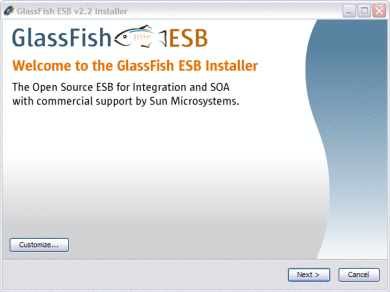

Install glassfish software#
Open Eclipse and select the Install New Software menu item under the Help menu.Copy this link to download the dependenciesįollowing the link of the documentation (1).Several links are proposed but, I will just show you the ones that worked for me. =. some research, I was able to install GlassFish Tools on eclipse.Īlthough eclipse has archived the GlassFish Tools dependencies, Oracle has maintained them and offers documentation for installing them. Add the JMS related configuration in this file as shown below.Create a file for JNDI lookup as src\main\resources\jndi.properties.Will also add junit-jupitor-api for running the codes. Basically you will need to add 3 dependencies gf-client, imqjmsra and javax.jms-api. Add the dependencies needed to communicate with the Glassfish Server.

Step-2, Add the JMS dependencies in pom.xml Open the pom.xml and set the right java version.Create a maven project in your IDE (Eclipse, STS or IntelliJ) of jar.

Alternatively, you can follow along to create a maven project with the dependency listed below.
Install glassfish code#
Once you create the destination resources, JMS destination resources will look like the below screenshot.Īll the code examples are available on GitHub for download. There are some exclusions like ActiveMQ that allows Destination creation at runtime. You will learn about them in the latter part of this tutorial in detail. This means they need to be configured in the JMS providers before we write our Java code. No matter which JMS Provider you use, the ConnectionFactory and Destination are always needed to be provided by them. But for development or testing purpose you will need to create them on your local machines. You as a developer need not create them in a real worl scenario. Ideally, the destination resources and ConnectionFactory are created by the server admin.

We will use this jms/_defaultConnectionFactory throughout the course. Once you are done with the above steps, next is to visit the Admin console on Now, take a look at the “ JMS Resources/Connection Factories“, you can see the default JMS factories that Glassfish has created for you. OR, run the startserv.bat, if you are on Windows. Run sh startserv from the terminal, if you are on Mac or Linux. Navigate inside the extracted folder to start the server, cd glassfish5\glassfish\bin\from terminal. You need to download the Open Source Glassfish version from the Glassfish GitHub repo and then unzip it to a folder from where we will run the server. Steps for Glassfish installation and setup Step-1, Download the Glassfish and Unzip


 0 kommentar(er)
0 kommentar(er)
